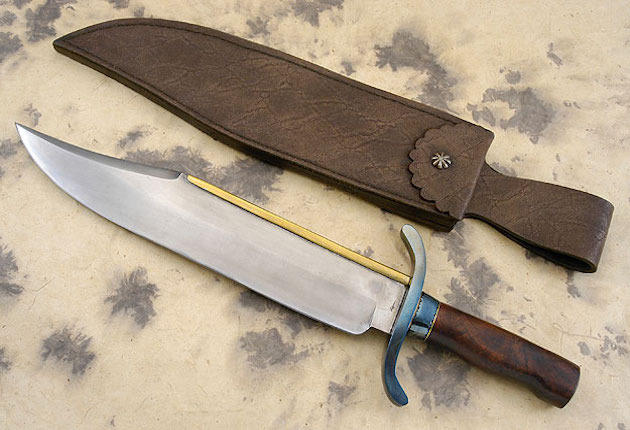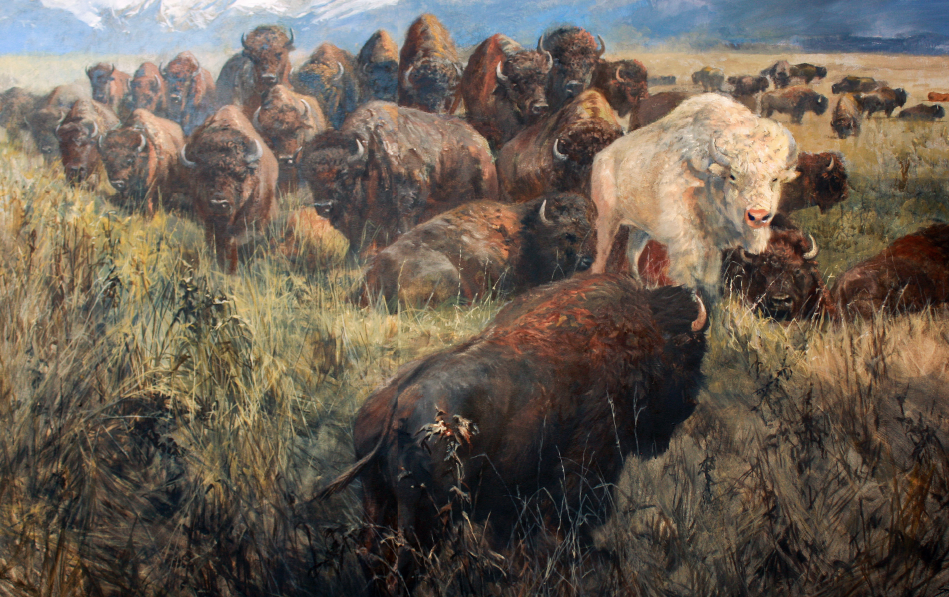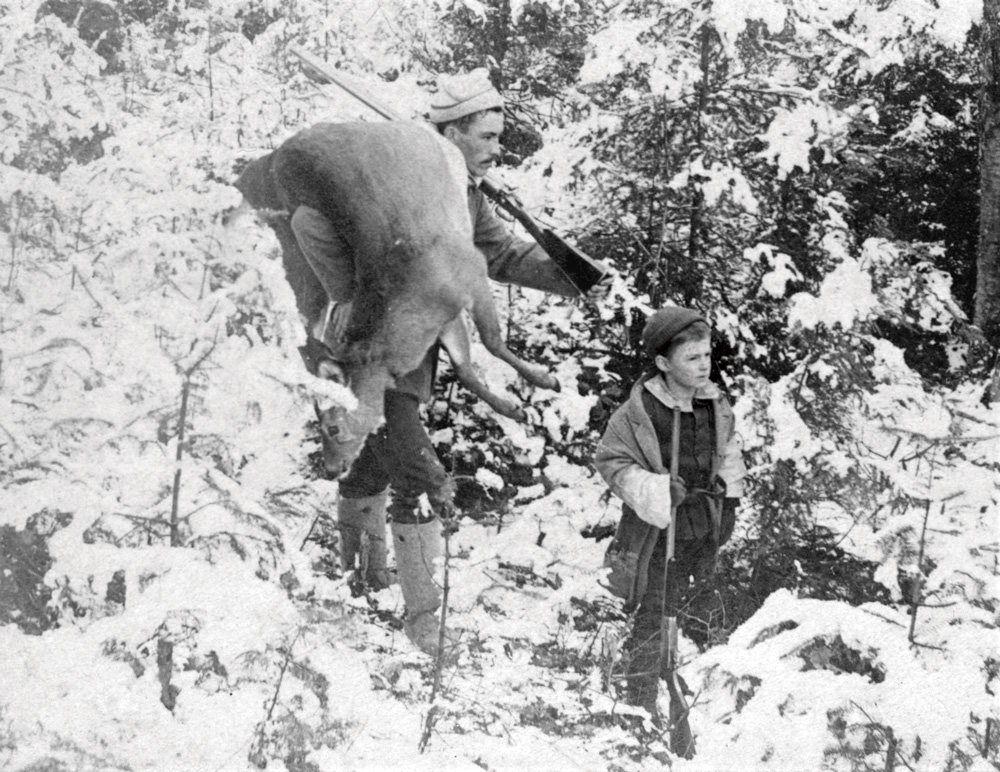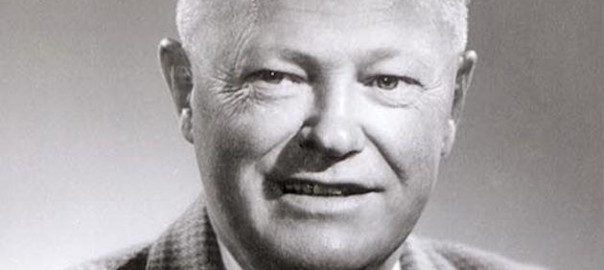Though latently as deadly as any viper, the Bowie knife is thought by some to be the epitome of the very best of the knifemaker’s art.
Note: The late Art Carter was the publisher of Sporting Classics and a frequent contributor to its pages. This article first appeared in the September/October 1981 issue.
We want to touch it. We’d like to pick it up, admire its craftsmanship and feel its solid weight, but it’s almost intimidating. It’s a paradox of beauty and terrible function. We’d love to own this bit of American history — this Bowie knife. To many frontiersmen, Civil War soldiers and present-day knife collectors, the Bowie was and is the ultimate knife.
It has the same virtues now that it has had for 150 years. Designed for carving up an attacking adversary, man or beast, into so many harmless pieces, it is physically awesome compared to almost any other knife except a sword. Such an imposing blade of polished steel — from nine to more than 12 inches, smooth as a maiden’s cheek and as cold as an executioner’s heart — seems to radiate a life of its own. Picking up a massive, razor-sharp Bowie is very much like touching a snake: It may not bite you, but there’s always a chance.
As you run your fingertips lightly down the length of its finely honed edge, there’s an involuntary quiver down the back of your spine. You can almost feel it between your ribs, leaking out your lifeblood.
Though latently as deadly as any viper, the Bowie knife is thought by some to be the epitome of the very best of the knifemaker’s art. Two types of Bowies are sought by collectors today: original and custom-made. Bowies circa 1830-1865 are exceedingly rare, have values in the thousands of dollars, and are out of reach for the average knife collector, but there are several hundred custom knifemakers across the country today making beautiful Bowies.
Depending on the maker, these knives can cost as little as $100 to as much as $3,000 or more. Also, waiting periods for these creations can be several months or about the time your kid will finish college…if he’s in kindergarten now. Craftsmen with names like Warenski, Lile, Herron, Sigman, Henry and many others are making, without a doubt, the finest examples of Bowie the world has yet seen.
As with everything else these days, prices for handmade knives are going up. Over the last few years these knives have proven not only objects of art, but also fantastic investments. Many Bowie knives that could have been purchased from some of the top knifemakers five years ago for a couple hundred dollars or less now run into several thousand dollars. If you want a knife for your collection, don’t wait to buy.
To understand the status of the Bowie in our history, we must examine the misty stories surrounding it since its conception in the early 1800s. Much of the Bowie’s past is shrouded in hearsay and perhaps even myth, but whether true or not, it is a wonderfully romantic start to a legend.
As the story goes, a certain wealthy Louisiana land speculator named Jim Bowie was having a nasty feud with a fellow named Major Norris Wright. Around 1825 they got into an argument in the street of a Louisiana frontier town. Wright became so angry that he pulled a gun and shot at Bowie. Whether he hit him or not is rather cloudy, but at any rate Bowie was relatively unhurt. In a rage, Bowie also pulled a gun but couldn’t get the thing to go off (guns of that period were not very reliable). They then resorted to fisticuffs, with onlookers finally separating the two men.
Soon after this ugly affair, Jim’s older brother Rezin gave him his personal hunting knife for protection. It was a straight-pointed knife with a blade 9¼ inches long and about 1½ inches wide. Rezin evidently figured, as many frontiersmen came to believe, that you didn’t have to worry if a knife would fire or not in the heat of a fracas. It was always ready and never needed reloading.
Bowie’s feud with Major Wright came to its glorified conclusion in 1827 on a sandbar of the Mississippi River, close to the Louisiana town of Vidalia. They were seconds in a duel, in which two shots were fired from the opponents’ dueling pistols. Neither hurt. According to custom, this should have ended the proceedings, but Wright seized the opportunity to attack Bowie. He shot Bowie in the hip and stabbed him with a sword cane.
Though wounded, Bowie somehow succeeded in killing Major Wright and wounding another assailant with the knife Rezin had given him. Bowie nearly died from the fight, but this incident started the Bowie knife’s rise to glory.
Actually, the knife that Jim Bowie used wasn’t the Bowie that later gained so much fame. Although Rezin’s knife had served him well, Jim had other ideas on what made the ideal fighting knife. So, sometime around 1830 or 1831, it is said that Jim Bowie visited a well-known blacksmith and knifemaker named James Black in Washington, Arkansas. Black claimed to have a secret process for tempering steel, which he later took to his grave. Bowie gave the knifesmith a wooden model of a blade that he wanted. When Bowie returned, Black had made two knives, one like Bowie’s and one of his own design. Bowie liked Black’s knife the best, and thus the “Bowie knife” of legend and exaltation was born.
Although no one really knows what it looked like, it is generally believed to have had a large, clip-pointed blade about 12 inches long with a double guard.
The fires of Bowie’s fame spread across the frontier after the Vidalia sandbar fight. They later were fanned higher at a place called Natchez Under-The-Hill, where, in a knife fight, Bowie almost cut off the arm of a gambler named John Sturdivant.
Another terrible battle took place after Bowie began carrying the James Black knife. Attacked by three desperate types, Bowie is said to have killed all three, cutting off one man’s head, disemboweling another, and splitting the other’s skull to his shoulders.
This may have happened just like the story, or maybe not, but it certainly could have. Not only was Bowie skilled in knife fighting, but he was also very strong. During those days when the average man was about as tall as your grandmother, Bowie was a powerfully built six-footer. He had gotten his muscles and toughness from heavy work, farming, and logging as a young man.
Only six years after he obtained the knife from James Black, Jim Bowie and the knife that carries his name met their ultimate fate. After 12 days of siege, on March 6, 1836, Jim Bowie, Davy Crockett, Colonel William Travis, and more than 150 brave men died at the Alamo fighting for Texas’s independence from Mexico. What happened to the original Bowie knife is unknown. Some think it was carried off by a Mexican soldier; others say it was burned at the Alamo. Whatever happened to it, it had helped to shape the American frontier.
From 1830 on, as the legend of the Bowie knife grew, suddenly everyone had to have one. Mountain men carried them west; Indians feared the “long knives” who used them with terrible efficiency. In the South and West, many men felt undressed without one. Congressmen wore them in Washington. The Bowie craze lasted through the Civil War, where many soldiers relied on their knives in close combat. Confederate troops especially utilized Bowie knives and even had their own version, known as the “Arkansas Toothpick” (double-edged all the way down the blade).
There were two types of Bowies prevalent from 1830 to the 1860s: the American frontier and the English. During the days of riverboat gamblers and mountain men, a person could commission a frontier knifesmith to forge a Bowie knife for him. If that wasn’t possible, he could purchase one of the English Bowie knives that flooded into this country during that time. News of this great American knife had spread into England immediately after its exploits began. The cutlery firms of Sheffield, such as George Wostenolm, who made their famous I*XL knives, along with Joseph Rogers and Sons, and a number of others, found a lucrative market for “gentlemen’s” Bowies in America. These English Bowies tended to be more gentlemanly than those forged in the states. Materials such as silver, ivory, pearl, and others were used in their construction.
After the Civil War the Bowie’s popularity waned, but it has influenced American knife making up to the present day. Most of us had for our first real hunting knife a smaller version of a Bowie with a five- or six-inch clip-pointed blade. Only in the last few years have short, drop-pointed hunting knives become popular.
The Bowie knife has achieved a place in America’s history that few other weapons can match. Along with such important destiny-shapers as the Kentucky rifle and the Colt .45 six-shooter, the Bowie knife is an important part of our heritage.
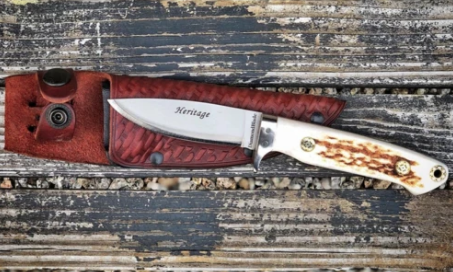 Let this Bob Loveless tribute knife speak to your own refined style with its balance, function, and beauty. This drop point hunting knife makes field dressing game an almost effortless task. Buy Now
Let this Bob Loveless tribute knife speak to your own refined style with its balance, function, and beauty. This drop point hunting knife makes field dressing game an almost effortless task. Buy Now

